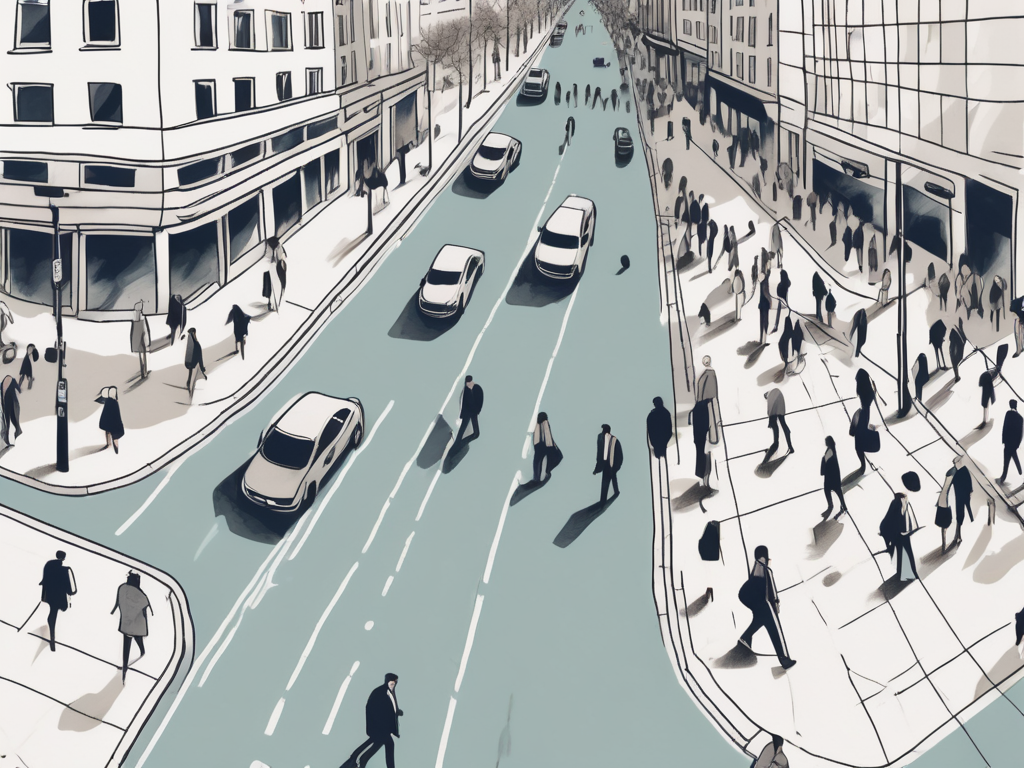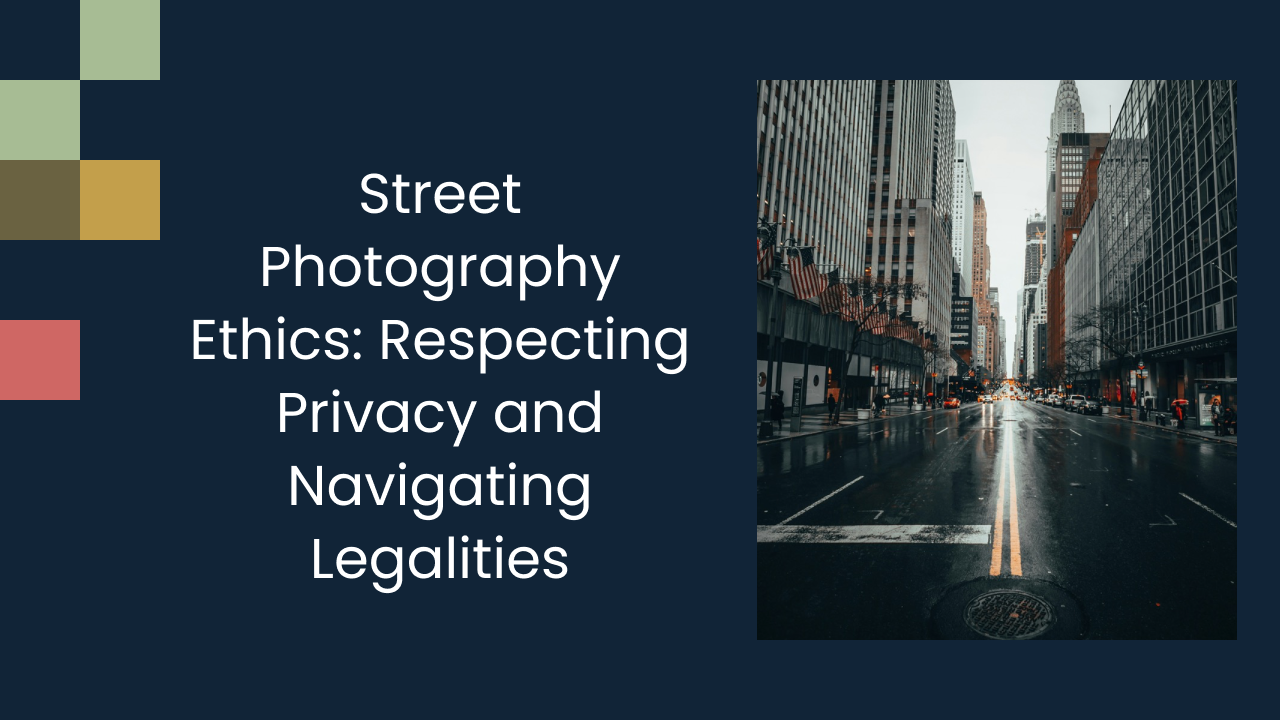Street Photography Ethics: Respecting Privacy and Navigating Legalities

Street photography is a unique genre that captures candid moments of everyday life in public spaces. It allows photographers to document the beauty and authenticity of the world around them. However, when engaging in street photography, it is essential to consider the ethical implications and legalities involved. Respecting privacy and navigating legal boundaries are crucial aspects that every street photographer should be aware of and adhere to.
Understanding the Basics of Street Photography
Defining Street Photography
Street photography is often characterized by capturing raw and unposed moments in public spaces. It aims to document daily life, culture, and social interactions without interfering or altering the scene.
One of the key elements of street photography is the element of spontaneity. Photographers must be quick to react and capture moments as they unfold, often without the luxury of time to compose the perfect shot. This adds a sense of authenticity and immediacy to the images, allowing viewers to feel like they are witnessing the scene firsthand.
The Artistic Appeal of Street Photography
Street photography offers a fascinating perspective on the world. It allows photographers to capture unique and unexpected moments that tell compelling stories. The combination of light, composition, and human emotions creates powerful and evocative images.
Furthermore, street photography serves as a visual time capsule, preserving moments in history for future generations to reflect upon. By documenting the everyday lives of people from diverse backgrounds and cultures, street photographers contribute to a collective visual narrative that transcends language and time.
The Ethical Dilemmas in Street Photography
Balancing Art and Privacy
When practicing street photography, there is an inherent tension between the right to privacy and the freedom of artistic expression. Photographers must strike a delicate balance between capturing interesting images and respecting the privacy of their subjects.
Street photography is a unique art form that often captures raw and candid moments in public spaces. The challenge lies in navigating the fine line between documenting authentic scenes and intruding on the personal lives of individuals who may not consent to being photographed.
Consent in Street Photography
Seeking permission from subjects in every street photograph would defeat the purpose of candid and unposed shots. However, it is essential to be mindful of people's comfort levels. If a subject expresses discomfort or explicitly asks not to be photographed, it is crucial to respect their wishes.
Photographers need to be aware of the power dynamics at play when capturing imagesof strangers. While some may argue that public spaces are fair game for photography, it is important to consider the potential impact of sharing these images without consent. Striking a balance between artistic freedom and ethical responsibility is a constant challenge in the world of street photography.
Respecting Privacy in Street Photography
The Importance of Respecting Privacy
Respecting privacy is one of the fundamental ethical responsibilities of street photographers. It ensures that individuals are not unnecessarily exposed or harmed by the images captured. Respecting privacy helps maintain trust and preserves the integrity of the art form.
When a street photographer respects privacy, it not only reflects positively on the individual photographer but also on the entire community of street photographers. By upholding privacy standards, photographers contribute to a culture of respect and consideration in the field, fostering a more ethical and sustainable environment for all involved.
Tips for Respecting Privacy While Shooting
There are several strategies that street photographers can employ to respect the privacy of their subjects:
- Choose your shooting location carefully to minimize intrusion into private spaces.
- Shoot from a distance using telephoto lenses to maintain physical distance while still capturing intimate moments.
- Avoid exploiting vulnerable individuals or depicting sensitive situations without their informed consent.
- Consider blurring or obscuring identifiable features of subjects to protect their identity.
- Engage in open dialogue and educate others about the intentions and ethics of street photography.
Additionally, it is crucial for street photographers to be aware of the legal implications surrounding privacy rights in different regions. Understanding the laws and regulations pertaining to photography in public spaces can help photographers navigate potential ethical dilemmas and ensure they are operating within legal boundaries.
Navigating the Legal Aspects of Street Photography
Understanding Photography Laws
Street photographers must familiarize themselves with the applicable laws and regulations in their specific jurisdiction. These laws vary from country to country and even within different regions. Understanding the legal framework ensures that photographers operate within the boundaries set by the law.
Moreover, it's essential for street photographers to grasp the concept of intellectual property rights, especially concerning public spaces. While individuals in public places generally have limited privacy rights, photographers should be mindful of capturing and sharing images that may infringe on someone's right to control the commercial use of their likeness.
Legal Consequences of Invasive Street Photography
Engaging in invasive or unethical street photography can lead to legal ramifications. Invasion of privacy, harassment, and defamation are potential legal issues that street photographers may face. It is crucial to be aware of these consequences and conduct oneself in a responsible and respectful manner.
Furthermore, understanding the nuances of consent in street photography is paramount. While laws regarding photographing people in public places vary, obtaining explicit consent when photographing identifiable individuals is a best practice that can help mitigate legal risks and foster positive relationships with subjects.
The Role of Empathy in Street Photography
Building Trust with Subjects
Empathy is a vital quality for street photographers to possess. Building trust with subjects allows for more authentic and meaningful photographs. Interacting with people and showing genuine interest in their lives helps establish a rapport and creates a positive atmosphere during the photography process.
Furthermore, empathy in street photography goes beyond just capturing a moment; it involves truly understanding the emotions and stories behind the faces in the frame. By taking the time to connect with subjects on a human level, photographers can uncover layers of depth and vulnerability that add richness to their images.
The Impact of Empathy on Your Photography
Approaching street photography with empathy can lead to more powerful and thought-provoking images. It enables photographers to delve deeper into the lives of their subjects, capturing genuine emotions and experiences. By showcasing the human side of street photography, empathy can evoke empathy in viewers as well.
Moreover, empathy can act as a bridge between the photographer and the subject, allowing for a collaborative storytelling process. When subjects feel understood and respected, they are more likely to open up and share their authentic selves, resulting in photographs that resonate with raw emotion and truth.
Looking for an easier way to manage and grow your studio? Experience a platform built by a photographer, for photographers. Try it free for 2 weeks.











